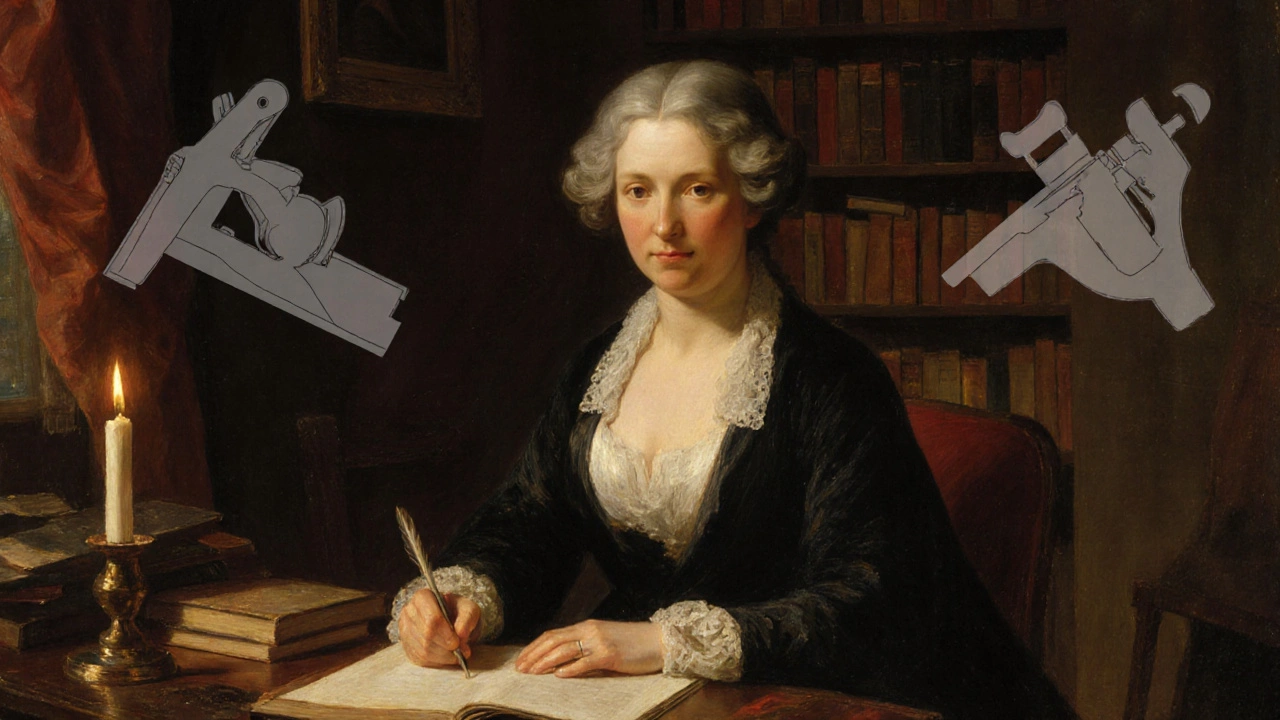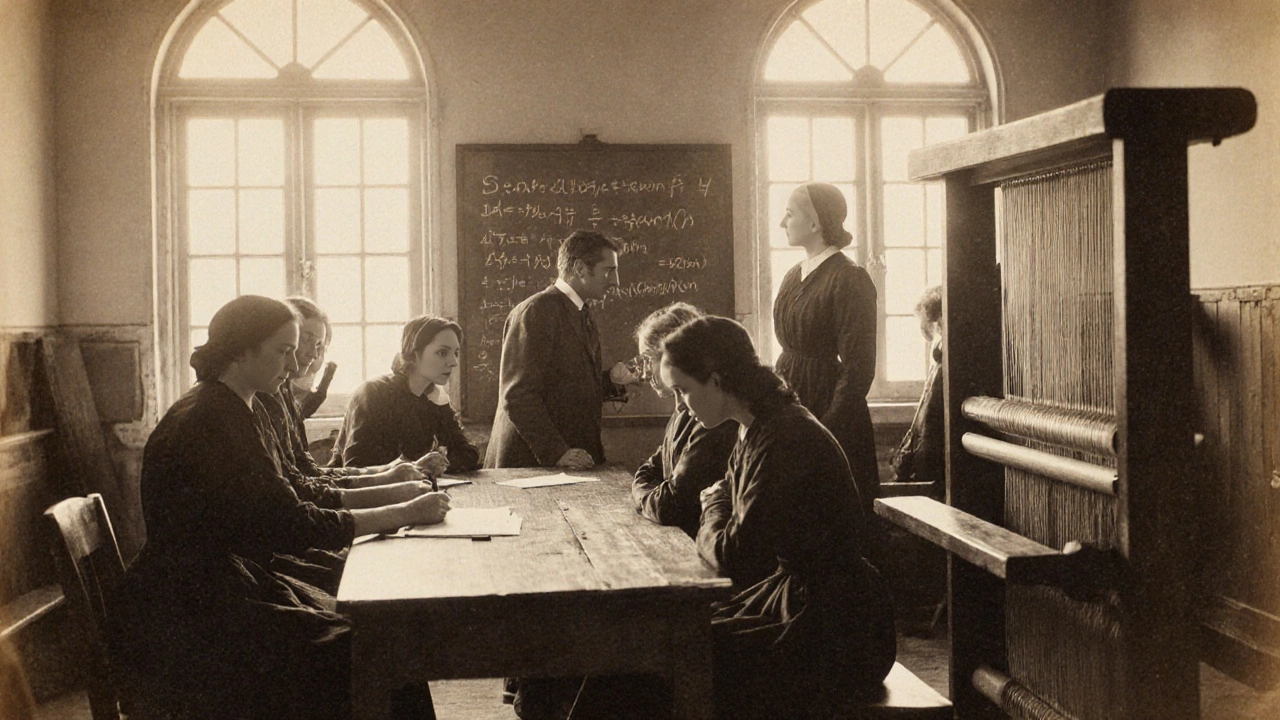
Imagine spending months mastering a skill-welding, coding, or carpentry-only to be told that the job market will never let you use it because you’re a woman. That paradox has haunted generations of learners, and it’s exactly what Mary Wollstonecraft warned about when she said education is meaningless without equality.
Who Was Mary Wollstonecraft?
Mary Wollstonecraft was an 18th‑century British writer and philosopher, best known for her 1792 treatise A Vindication of the Rights of Woman. In that work she argued that women’s education was worthless unless it was paired with equal social and political rights. Today her ideas echo loudly in every discussion about women's vocational training.
Why Equality Matters in Education
Wollstonecraft’s central claim can be boiled down to a simple equation: Education + Equality = Empowerment. Without legal, economic, and cultural equality, knowledge remains a decorative trophy instead of a tool for change. She illustrated this with vivid examples-girls taught to read only to become better mothers, not independent contributors to society.
From Theory to Practice: Early Efforts in Women’s Vocational Training
In the early 19th century, philanthropists in Britain and the United States began setting up schools that taught women practical skills. Notable pioneers include:
- Elizabeth Fry, who introduced textile work for prison inmates, many of whom were women.
- Caroline Herschel, who ran a small algebra tutoring circle for working‑class girls in Hamburg.
These programs still fell short of Wollstonecraft’s vision because graduates often faced hiring discrimination. The lesson? Skill alone does not guarantee a fair wage or upward mobility.

Modern Vocational Training for Women: Where We Stand in 2025
Fast forward to 2025 and the landscape looks dramatically different, yet the core challenge remains. The UK Equality Act 2010 enforces non‑discrimination, and EU funds support gender‑balanced apprenticeships, but gaps persist in STEM fields and high‑pay trades.
| Aspect | 1800s | 2020s |
|---|---|---|
| Legal Framework | None; training often illegal for women | Equality Act 2010, EU Gender Equality Directives |
| Funding Sources | Charitable donations | Government grants, EU structural funds, private scholarships |
| Target Sectors | Textiles, domestic service | Construction, IT, renewable energy, advanced manufacturing |
| Participation Rate (UK) | ~5 % | ~38 % (women in apprenticeships) |
| Pay Gap After Training | Irrelevant - most women remained unpaid | Women earn 12 % less on average than male counterparts in the same trade |
The table shows progress, but also why equality must be woven into every policy, not tacked on later.
Three Pillars for Making Vocational Training Truly Equal
- Legal Enforcement - Ensure anti‑discrimination clauses are not just paper. Regular audits, transparent reporting, and strong penalties for non‑compliance keep employers honest.
- Inclusive Curriculum Design - Build training modules that respect diverse learning styles and cultural backgrounds. For example, offering flexible schedules helps mothers balance childcare.
- Career Pathway Support - Pair classroom time with mentorship, internships, and guaranteed job interviews. Without a clear pathway, skills fade after certification.
These pillars directly echo Wollstonecraft’s idea: education must be linked to real‑world opportunities.
Practical Checklist: Setting Up an Equal‑Focused Vocational Program
- Conduct a gender‑gap analysis of local labor markets.
- Partner with industry leaders who have demonstrated gender‑balanced hiring.
- Secure funding from sources that require gender‑equality outcomes (e.g., EU Horizon Europe).
- Develop mentorship schemes that pair female apprentices with experienced women in the field.
- Implement bias‑training for instructors and employers.
- Track post‑completion wages and promotion rates by gender for five years.
Follow this list and you’ll avoid the trap of delivering a certificate that holds no value for women.

Case Study: Bristol Women’s Institute (BWI) - Turning Theory into Action
Located in the very city where I live, the Bristol Women’s Institute launched a 2022 pilot program in solar panel installation. Key outcomes:
- 120 women enrolled in a six‑month course.
- 84 % secured paid jobs within three months of graduation.
- Average starting salary £28,500, narrowing the gender pay gap in the renewable sector from 15 % to 7 %.
The success hinged on three factors: strict adherence to the three pillars above, a partnership with a local utility that pledged to hire at least 50 % women, and a mentorship program led by senior female electricians.
How to Advocate for Equality in Your Own Training Environment
Even if you’re not a policymaker, you can push for change:
- Ask your trainer whether the program includes guaranteed job placements for all graduates.
- Request data on placement rates broken down by gender.
- Form a study group with fellow women learners to share resources and opportunities.
- Contact local government representatives and cite the Equality Act when demanding fair practices.
Small actions collectively create the pressure needed to honor Wollstonecraft’s demand for equal footing.
Looking Ahead: The Future of Equal Vocational Education
Technology will continue reshaping work-AI, robotics, and green energy are on the rise. If we embed equality now, women will not just fill existing gaps but will lead new industries. Imagine a future where half of all AI ethics boards are chaired by women who first learned coding in a gender‑balanced apprenticeship. That’s the world Wollstonecraft imagined: education as a true lever for social transformation.
Did Mary Wollstonecraft talk specifically about vocational training?
She did not name modern trades, but her argument that women need practical knowledge to participate fully in society laid the groundwork for later vocational movements.
What legal protections exist in the UK for women in apprenticeships?
The Equality Act 2010 prohibits discrimination on the basis of gender. Employers offering apprenticeships must demonstrate equal access, pay, and progression opportunities.
How can I find a gender‑balanced training program near me?
Check the UK government’s apprenticeship portal, filter by ‘gender equality commitment’, and look for programs that publish placement statistics.
Are there scholarships specifically for women in trades?
Yes. Organizations like the Women’s Engineering Society, Skills Development Scotland, and the EU’s Women in Tech scheme offer targeted funding.
What are common barriers women face after completing training?
Bias in hiring, lack of mentorship, and inflexible work hours are the top three obstacles. Addressing these requires both policy and employer commitment.
